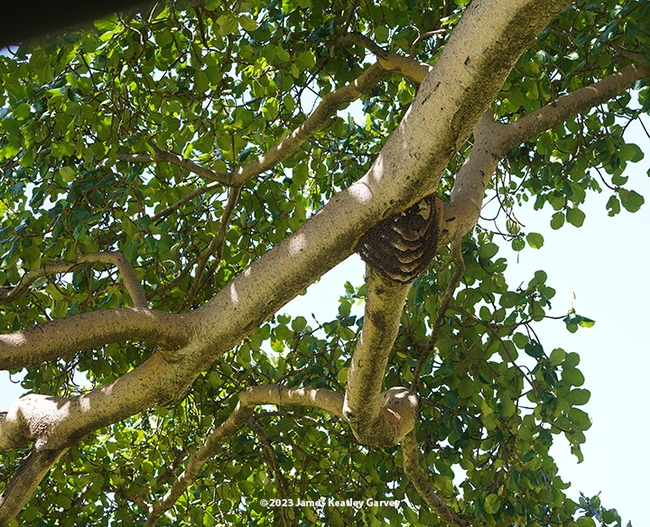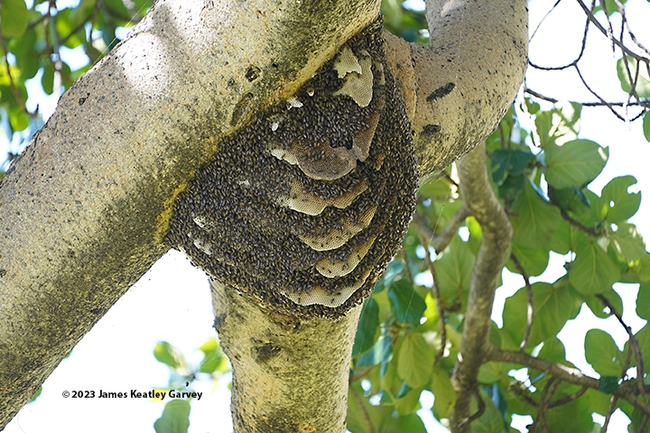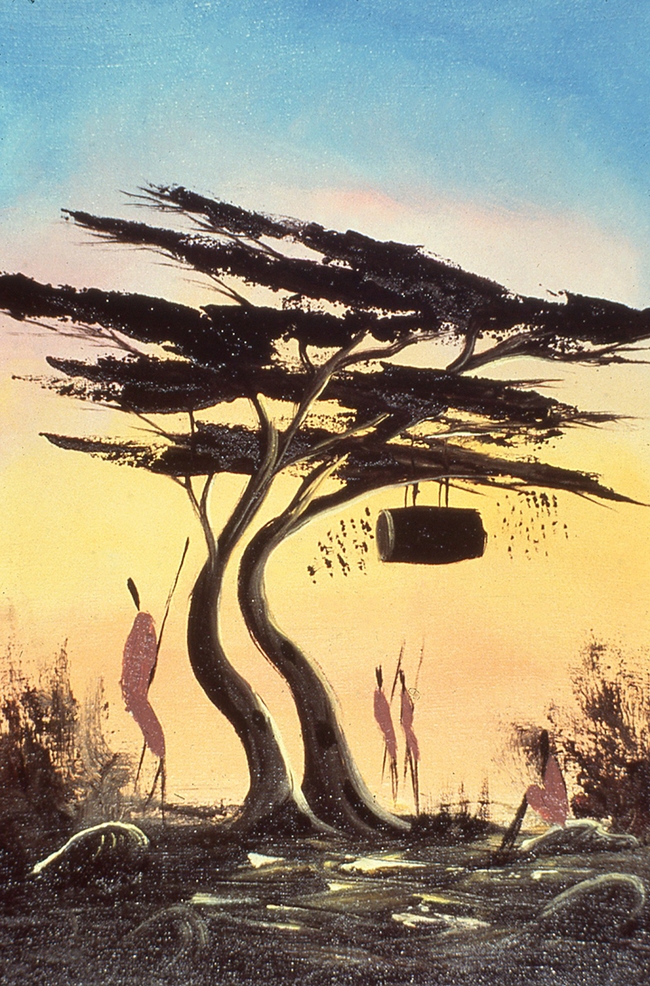
So said bee scientist Thomas Seeley, the Horace White Professor in Biology, Department of Neurobiology and Behavior, Cornell University, when he addressed the 2018 UC Davis Bee Symposium on "Darwinian Beekeeping."
Seeley, who studies feral or wild bee colonies in the 4200-acre Arnot Teaching and Research Forest owned by Cornell University, emphasized that "honey bees are superb beekeepers; they know what they're doing."
Fast forward or "buzz" forward to Africa.
Have you ever seen a feral bee colony of the African honey bee, Apis mellifera scutellata?
Son James Keatley Garvey, CEO and founder of Self LLC, captured images of a feral bee colony on Feb. 19, 2013 in a fig tree in the Maasai Mara National Reserve, Kenya.
The colony's architecture is nothing short of incredible--sort of like immaculate construction! Comb building, as evolutionary biologist Charles Darwin observed, is "the most wonderful of all (insect) instincts."
Josh van der Ploeg of andbeyond.com--he's a guide, public relations manager and podcast host--told us in an email that scutellata is "the more commonly occurring bee species inland. The tree they have constructed their hive on is a giant-leaved fig tree or Ficus lutea."
Bees share the Maasai Mara National Reserve with The Big Five (lion, elephant, rhino, leopard and African buffalo) as well as four more to tally The Big Nine: cheetah, giraffe, hippo and zebra. The reserve, primarily of savannah grasslands, rolling hills, and riverside crossings (Mara and Talek rivers), is located along the Great Rift Valley area, about 140 miles from the capital city of Nairobi. Established in 1961 as a wildlife sanctuary and now comprised of more than 700 square miles, it also hosts the Great Migration, known as one of the Seven Natural Wonders of Africa, and one of the ten Wonders of the World.
“I've not been to Africa, but I have read a fair amount about beekeeping in different parts of the continent,” Seeley wrote in an email. "I know that in the grassy woodland regions, nest sites are rare for colonies, so often they have to nest in the open, as shown in your son's photo. If a swarm sees a protective cavity, it will use it. This is why beekeepers in this region of Africa have good success in hanging up log hives."
Log hives are the most widely used type of hives in Africa, according to the Apiculture Platform of Kenya.
Seeley, who teaches courses on animal behavior and researches the behavior and social life of honey bees, shared an image of a log hive painting that his late mentor, Professor Roger Morse (1927-2000) of Cornell purchased in the 1970s at a market in Kenya. Morse was known as "the Cornell entomology professor who championed the art and science of beekeeping."
Seeley, who joined the Cornell faculty in 1986, has authored numerous books, including Honeybee Ecology (1985), The Wisdom of the Hive (1995), and Honeybee Democracy (2010). Look for his next book, Bees' Ways: 20 Mysteries of Honey Bee Behavior Solved, in the spring of 2024.
Attached Images:

A feral or wild bee colony in a fig tree in the Maasai Mara National Reserve, southern Kenya. (Photo by James Keatley Garvey)

Close-up of a feral or wild bee colony in a fig tree in the Maasai Mara National Reserve, southern Kenya. (Photo by James Keatley Garvey)

This image is of a painting of a log hive that Cornell professor Roger Morse purchased in a market in Kenya in the 1970s. (Photo courtesy of Thomas Seeley)